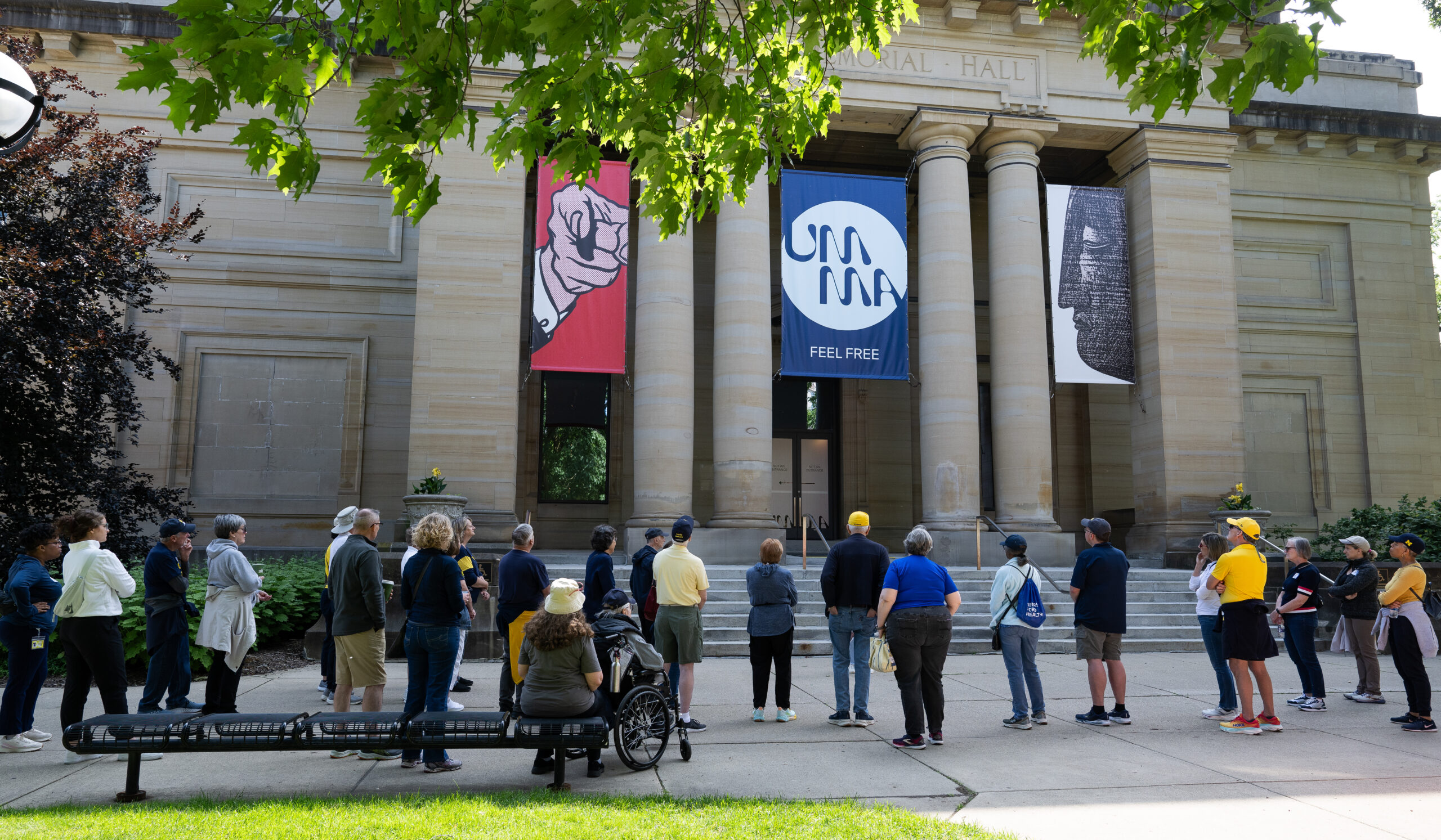Courtni Holst, ’98, and her husband set off from the Alumni Center for a campus tour on June 14. But it was far different than the ones they remember from their first days on campus.
Rather than scoping out the best dorms, Holst was among a group of alums who traced University history across campus, highlighting their recent lessons from Alum 101, a course offered through Alumni Education. Stops included the Northwest Ordinance inscribed on the pediment of Angell Hall and the new location of the historic Tappan Oak’s sapling.
“Campus is always changing. It’s interesting to learn new things about the institution,” Holst says.
Alum 101 is a series of free online mini courses offered by the Alumni Association’s Education program, allowing alums to dive back into classroom learning alongside current students with programming that “highlights what’s uniquely Michigan.” The first course, A Wolverine’s Guide to U-M History, recently concluded with the campus visit, but more Alum 101 courses are planned.
The course showcased University days of yore through a series of four lessons. One focused on notable (or infamous) alumni, while another dug up stories of true crime from the Bentley Historical Library archives. The final class, taught by associate dean of the School of Music, Theatre & Dance Mark Clague, ’90, offered a deep dive into the history of various U-M songs.
“We have to make sure we’re picking something that will be of interest to a broad array of alums,” says Haley Briggs, ’11, senior associate director of Alumni Education.
“We try to find … content that’s relevant, timely, and actionable — information that alums can actually utilize and do something with and know that the University is a continued resource for them [in] their lifelong learning journey,” she says.
Each mini course includes four live sessions on consecutive Wednesdays. Hour-long classes begin with a short lecture taught by faculty members, staff experts, or alumni experts followed by Q&A sessions. A chat function also remains open, and participants are invited to engage throughout the hour.
More than 1,240 alumni registered for the first course, and 450 alumni attended at least one live session. Since sessions are recorded, participants who might have to miss a lesson are able to catch up on their own time. Even more crucially, each mini course is designed to end with what Briggs is calling an “experiential, on-campus, field trip learning component.”

“We’re looking for a deeper way to engage alumni … and provide them with a synchronous experience that’s building a learning community,” Briggs says.
To conclude their class on U-M history, alums gathered for coffee and bagels at the Alumni Center before splitting into groups for a campus tour tailored to the course.
Briggs says the event was “an opportunity for the learners to gather in one place and continue to build that learning community and connect with one another.”
During the course, Holst was intrigued to learn that the manifesto and personal papers belonging to Ted Kaczynski, MA’64, PhD’67, (the Unabomber) are housed by U-M’s Special Collections. She says she was impressed by “the access we have as alumni to that information.”
Meanwhile, Andrea Hyslop, ’89, who studied engineering as an undergrad but says she’s “partial to” the arts, loved the session on the U-M songbook.
“I liked listening to some of the more obscure songs,” she says, as well as learning how some of the songs were created by students.
When participants were asked for suggestions for topics for potential future courses, Eric Nelson, ’93, MSE’00, suggested a course on major medical breakthroughs by researchers at Michigan Medicine. He and his wife are both alums; their three children are currently enrolled as well.
“We’re a Michigan family,” Nelson says. “Anything ‘Michigan’ I have interest in to some degree.”
Natalia Holtzman, MSI’19, is a freelance writer based in Ann Arbor.





